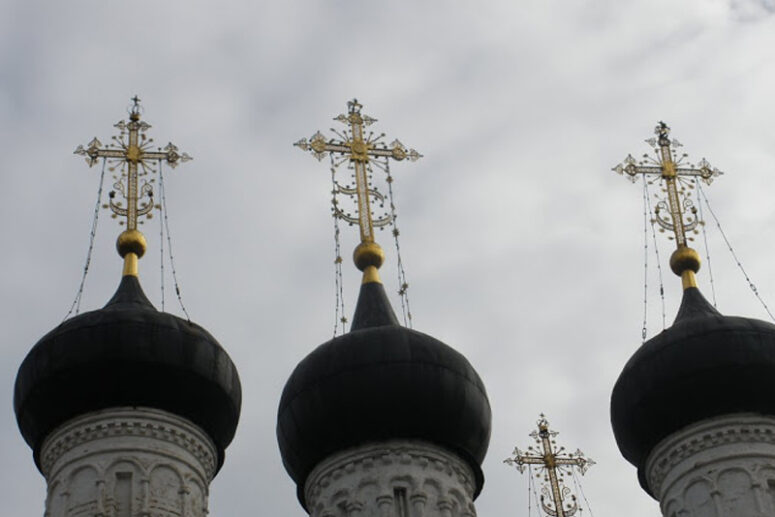
The main parts of the Cross were two bars: one was vertical (the longer one), while the other one was horizontal and was joined with the long bar at right angles. The Savior of the world was nailed to these bars. In the top of the Golgotha Cross was a small plate – titulus – about which it is said in the Gospel: “And Pilate wrote a title, and put it on the cross. And the writing was, JESUS OF NAZARETH THE KING OF THE JEWS” (John 19:19). There was also a third bar which served as a footboard. Without it a body nailed to the cross could fall down.
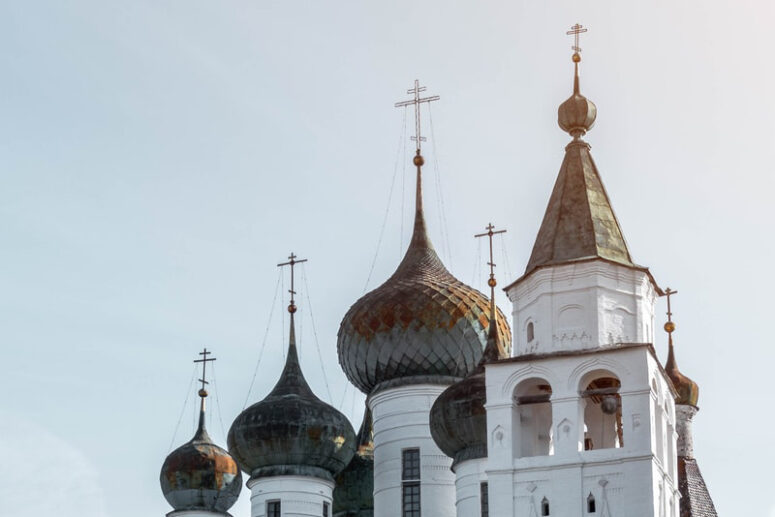
However, the crosses on church domes often differ in their shape from a usual eight pointed cross. The cross on the Orthodox church’s dome expresses an idea of the House of God and the ship of Salvation and has the appropriate symbols. Very often the questions and misunderstandings arise concerning the crescent (tsata), located at the bottom of the cross. What is the meaning of this symbol?
First of all, we must understand that the crescent in the Orthodox cross has no relation to either the Muslim religion, or to a victory over the Muslims. The Crescents were used as decorations of Orthodox crosses much earlier: for example, the Church of the Intercession on the Nerl (1165), Dimitrievsky Cathedral in Vladimir (1197) and others.
The crescent in ancient times was a sign of the Byzantine state, and only after 1453, when Constantinople was captured by the Turks, the Christian symbol became the official emblem of the Ottoman Empire. The Orthodox Byzantine crescent symbolized royal power.
Often, a crescent is portrayed as part of Episcopal vestments of St. Nicholas. It can also be found in other icons: the Holy Trinity, the Savior, and the Blessed Virgin Mary. All this makes it right to assume that the crescent on the cross is a symbol of the Lord Jesus Christ as the King and High Priest. Thus, the installation of a cross with a crescent on the dome of a temple reminds us that this temple belongs to the King of Kings and the Lord of Lords.
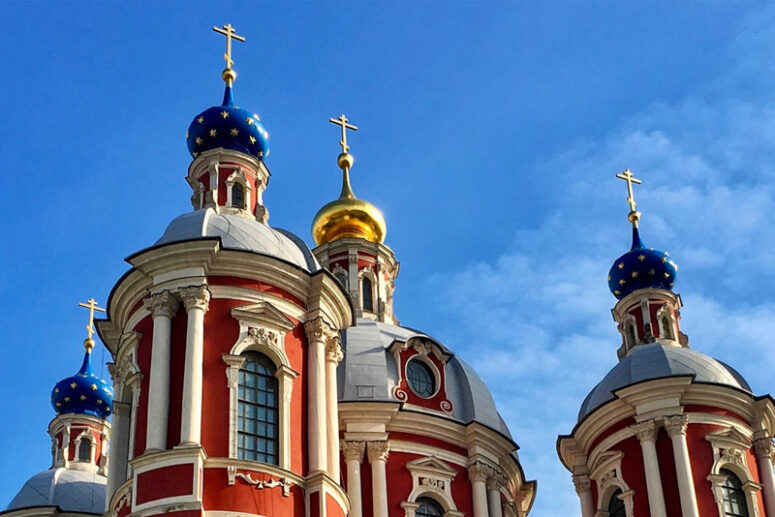
Moreover, from the past — from Christ and the first centuries of Christianity — we received another meaning of the cross with a crescent. St. Paul teaches in one of his epistles that Christians are able to “hold upon the given hope that is the Cross, which is as the safe and steadfast anchor for a soul.” (Hebrews 6:18-19). The cross overcomes death and devil. Holding this “anchor,” we are able to go through the waves of a stormy lifetime to a quiet bay, the Kingdom of Heaven.
The crosses with beautiful ornaments are set on the domes of St. Sophia Cathedral in Vologda (1570), Holy Trinity Cathedral in Verhoturye (1703), and the church in honor of blessed Cosmas in Kostylevo. They are decorated with twelve stars in the rays emanating from the center and with a crescent on the bottom. The symbolism of the cross vividly conveys the image from the book of Revelation: “And there appeared a great wonder in heaven: a woman clothed with the sun, the moon under her feet and a crown of twelve stars on her head”. There are researches who assume that it is an apocalyptic image referring to the Mother of God, while Christ is often called the Sun of Truth. Twelve stars could be the twelve apostles.
In addition to the described above symbolism of the crescent, there are also other meanings, which belong to the patristic tradition. For example, the image of the Cradle of Bethlehem, which held the Divine Infant Christ; the Eucharistic cup; the Church’s Ship on the board of which a person can reach the bay of salvation. It is also a symbol of baptistery. Sometimes it happens so that a cross on the dome does not eight eight but four points (with or without a crescent). The crosses on some well-known cathedrals have this very shape – for example, St. Sophia Cathedral in Constantinople (13th century), St. Sophia Cathedral in Kiev (1152), Dormition Cathedral in Vladimir (1158) and many others. Since the 3th century, when the four pointed crosses were found on the walls of the Roman catacombs, this form of the cross is considered equal to all the other forms.
Translated by Catalogue of Good Deeds

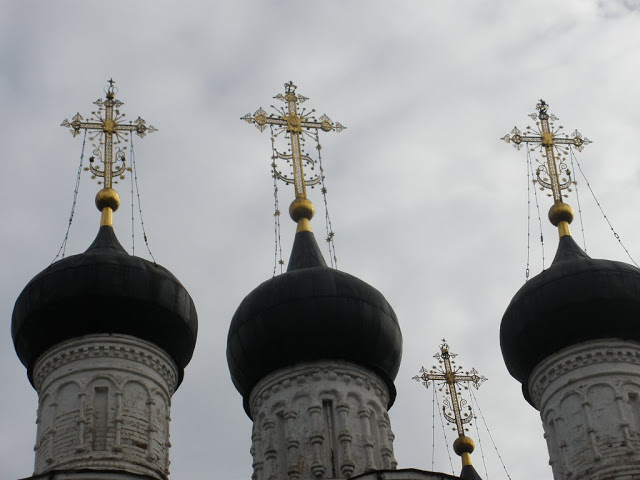

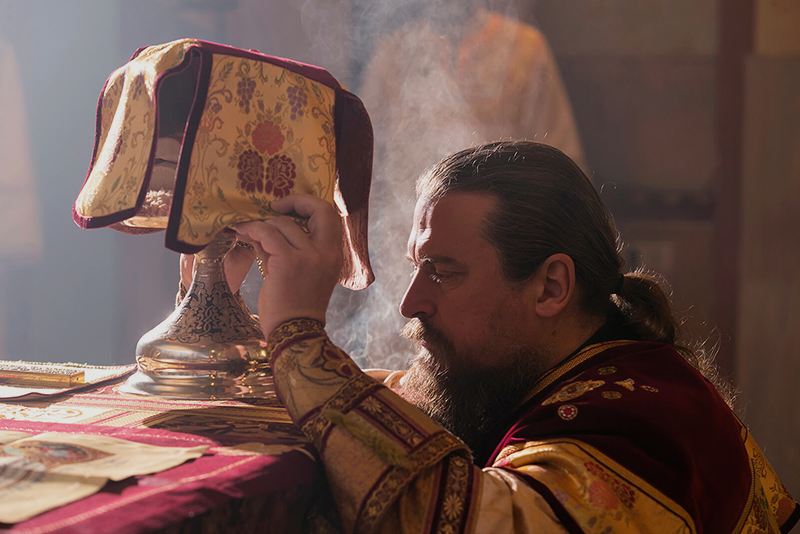
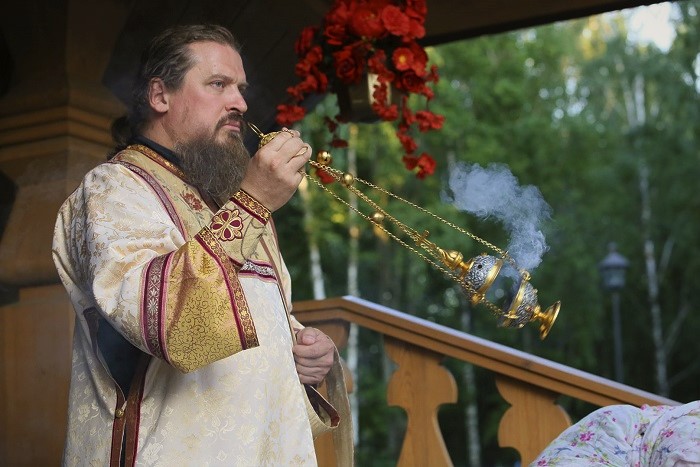
Thank you for thinking lesson. I thought the crescent hab a different meaning.